- Make It Yourself Lavender Heart-Shaped Bath Bombs!
- 20 Things You Never Knew About “Down There”
- 12 Best Foods For Those Suffering From Arthritis Pain
- 12 Personal Hygiene Mistakes Almost Everyone Makes (Mom Never Told You About #4!)
- 15 Medicinal Plants And Herbs From The Cherokee People
- 12 Mind-Blowing Benefits Of Drinking Coconut Water During Pregnancy
- 12 Outstanding Winter Foods That Won’t Fatten You Up Like A Christmas Turkey
20 of the Most Underused and Little Known Healing Herbs on the Planet
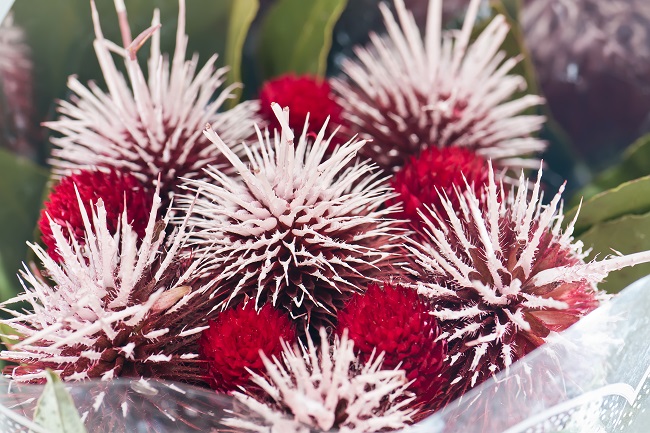
Photo credit: bigstock.com
Have you ever walked down the herbal aisle of your local health food store and found a really interesting selection of herbs? Then perhaps later you went to another health food store and you found the same selection of herbs, as if these are the only edible herbs on this earth? Have you ever wondered if there were other herbs, lesser known, or perhaps not as popular, but that still contain powerful healing compounds?
Well, you are absolutely right. There are plenty of herbs on this planet; Mother Nature didn’t limit us to 50 or so. There are thousands of them, all with their own unique healing capabilities. Sometimes these lesser known herbs can be rather pricey, but if you do some shopping online, chances are good that you can find some that are more reasonably priced. Another option would be to buy seeds and try to grow some on your own.
Keep reading and discover the top 20 little-known herbs and their amazing healing abilities.
1. Greenthread
Sometimes called Plains Tea, Navajo Tea, or Coyote plant. Greenthread is a group of flowering herbs of the genus thelesperma, from the Asteraceae family. This herb is a powerful diuretic and anti-inflammatory that has been used by Native Americans for hundreds, or perhaps thousands of years. This tea is great for detoxifying and is one of the best ways to stop a urinary tract infection or for soothing an achy tummy. This pretty plant grows very easily from seed.
2. Agrimony
Agrimonia is one of more than a dozen species of the Rosacea family that include apples, almonds, and roses. This herb comes from the Greek word Argemone, which means plant that heals the eyes. Historically, then, it is no surprise that this herb has been used to treat eye aliments. It is also good for skin conditions, sore throats and coughs, as well as helping the body to relax so you can fall asleep naturally.
3. Aniseed
Not to be confused with anise, although it does have a similar taste. Aniseed (pimpinella anisum) is super effective at improving the digestion, easing nausea and gas, as well as increasing the milk supply of nursing mothers. This is another herb that is great for sore throats, coughs, congestion, and to ease feelings of anxiety.
4. Catmint
As you might have already guessed from the name, this herb is related to the peppermint and spearmint family. You might know this as catnip but the funny thing is that catmint has the exact opposite effect on humans as it does on cats. Although catmint (catnip) might make your cat go little nuts, it’s extremely calming to humans. Catmint tea can relieve sore throats, headaches, sinus pressure, and reduce fever. You can actually apply wet leaves to wounds to stop bleeding and reduce swelling. Drinking catmint tea can also calm down jangled nerves and help you sleep. Like most mint plants, catmint (nepeta cataria) is super easy to grow, even from seeds and has beautiful purple flowers that attract bees and butterflies.
Continue to Page 2
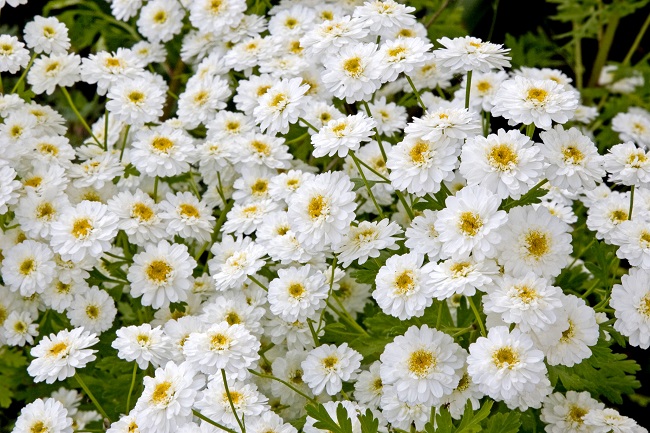
Photo credit: bigstock.com
5. Feverfew
You might have seen this herb, although it’s not as popular as it used to be in years past. The name alone says “I’m medicinal and I reduce fevers!” Feverfew (tanacetum parthenium) has been used for centuries all around the world, but many people still are unaware of all the benefits this herb has to offer beyond controlling fevers. This herb is a powerful anti-inflammatory, and drinking the tea regularly can help stop the pain and swelling of arthritis and rheumatoid arthritis. Feverfew is also one of the few herbal remedies that actually works when it comes to fighting migraine headaches. When it comes to relieving body aches and general pain, or for relieving anxiety and tension, including tension headaches, very few herbs are as effective as Feverfew.
6. Lovage
This herb has a wonderful flavor, something like a cross between a lemon, a celery, and anise. It’s a member of the carrot family, but doesn’t taste anything like a carrot. Its wonderfully unique flavor makes it a joy to cook with. Lovage (levisticum officinale) is also a great digestion soother along with cleansing abilities to the gastrointestinal tract. Lovage can also help to ease the pain caused from stomach ulcers. You can even add lovage to your bath water to help ease the pain and discomfort of inflammatory skin problems. This plant has thick, dark green foliage that would complement any garden.
7. Sweet Marjoram
This herb is closely related to oregano but has its own set of unique health benefits. This herb has delicate flavor is very tasty in vegetable dishes but it has powerful anti-microbial compounds. Like other leafy herbs, sweet marjoram (origanum majorana) is full of valuable nutrients and powerful antioxidants such as vitamin C, A, K, and minerals such as calcium, zinc, magnesium, potassium, and iron.
8. Tansy
This is an ancient herb that in our modern day world is often considered to be a weed. Tansy (tanacetum vulgare) is a pretty flowering plant when grown in a controlled garden. This plant is a naturally powerful insect repellant against garden pests such as ants, potato bugs, and mosquitoes. In fact, this herb is perhaps Mother Nature’s most perfect mosquito repellant. Simply rubbing the leaves on your skin will stop mosquitoes and other biting insects better than most of those toxic chemical bug sprays. Drinking tea from this plant can remove parasites from the body. Be very careful that you don’t consume too much tansy, however, as large quantities can be toxic, even deadly.
Continue to Page 3
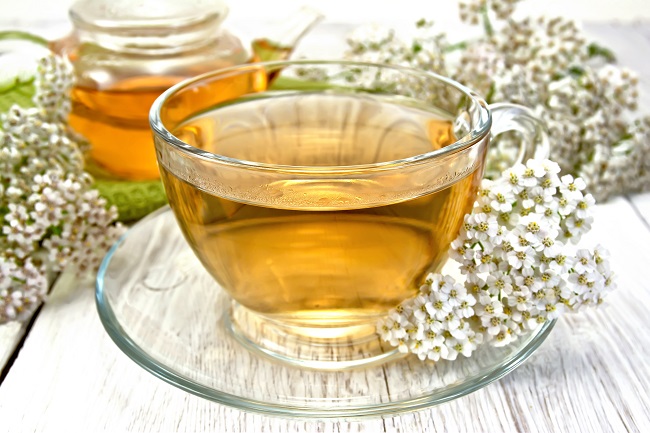
Photo credit: bigstock.com
9. Sweet Violet
Although most people think of sweet violet as nothing more than a pretty flowering plant, those beautiful purple flowers are for much more than show. Sweet violet (viola odorata) can be made into a syrup that is one of the best herbal remedies known to man for the relief of cold or flu symptoms. Tea made from the flowers makes a powerful pain reliever for sore muscles, body aches, or headaches. It is also a sweet way to relieve insomnia and is a powerful detoxifier by removing toxins from the body via urine. You can even eat these flowers! Put them on your salad for a pretty touch that adds a sweet aroma and flavor.
10. Yarrow
This is another ancient herb that, like feverfew, has fallen by the wayside in favor of other herbs. In fact, this herbs first recorded use goes back to 1,000 years BC in Greece. Yarrow (achillea millefolium) is one of the best immune boosting herbs to use during cold and flu season. It’s also good for relieving cold and flu symptoms, should you come down with the virus. The essential oil of this plant can be applied to the skin to help stop the pain, swelling, and itching from eczema. Use yarrow in aromatherapy to help clear up congestion and control coughing.
11. California Poppy
This is another plant that is thought of only for its pretty flowers and not for its medicinal use. California poppy is a very effective anxiety reliever but is so mild that it is even safe for children. This makes a great tea that offers fast relief for nervous anxiety and tension. Making a double or triple strength tea will even offer some pain relief.
12. Alfalfa
You have probably had green juices made from this herb and, yes, it’s the same stuff we give to livestock, but for very good reasons. This plant has roots that reach 20 and even 40 feet deep, so it sucks up trace minerals and other nutrients that plants with more shallow roots never find. It is also by no doubts a terrific source of protein for a plant! Alfalfa is great for stopping kidney pain, kidney stones, and other types of urinary discomfort. It’s also a powerful diuretic, which means that it also helps the body remove toxins. It has a stimulating effect as well, so it’s the perfect after illness tonic to help people regain their strength. Used long term, alfalfa can help decrease cholesterol level in the blood and cleanse both the liver and the bowels.
Continue to Page 4
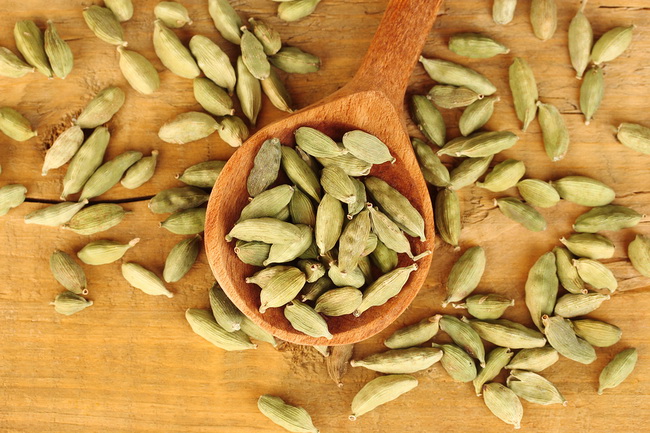
Photo credit: bigstock.com
13. Sage
Used in smudging and cleansing ceremonies throughout America by Native Americans, you might have some in your kitchen but use it only as a meat rub. Sage is an unbelievably useful herb, probably one of the most valuable ones around. It has strong anti-oxidant, anti-fungal, and anti-inflammatory compounds that can’t be beat. Before refrigeration, sage was used to help preserve meat. Sage helps improve digestion, eases diarrhea, reduces swelling and inflammation, dries up excess phlegm, soothes burns and cuts, kills bacteria, and helps to fight cold and flu viruses. This herb is super easy to grow and has beautifully long purple and white spiky flowers that look like velvet.
14. Cardamom
Related to the ginger family, cardamom is a group of beautifully flowering plants that can help to protect the gastrointestinal tract, improves blood circulation, removes cholesterol from the blood, and can prevent the development of certain types of cancer. This herb is a natural antimicrobial, which makes it very useful in fighting urinary tract infections and rinsing the mouth with tea can help protect the body from periodontal disease. Cardamom has anti-spasmodic and anti-inflammatory compounds and is a natural anti- depressant. It is also well-known for improving the functioning and overall health of the male reproductive system. On top of all this, cardamom has a beautiful floral scent and nice taste which has earned it the name of “Queen of Spices” throughout Asia. This plant can be difficult to grow, but if you are a patient and experienced gardener, you might want to give it try!
15. Brucea Javanica
This is another almost unheard of herb that has powerful medicinal compounds. This herb has been the subject of numerous studies and science confirms that this plant can treat bladder, cervical, and pancreatic cancers. Selective toxicity of Brucea Javanica has also killed up to 70 percent of breast cancer cells in some studies. Brucea Javanica needs to have more studies done to research its ability to fight and kill cancer cells.
SEE ALSO: The Most Potent Healing Mushroom on This Planet
16. Sweet Cicely
Sometimes called Garden Myrrh or Spanish Chervil, sweet cicely (myrrhis odorata) is completely edible from flowers to roots and has a licorice type of flavor. It tends to be very sweet and has a low glycemic index so the seeds are often chewed as an after dinner type of treat. Sweet cicely is great at detoxifying the urinary tract, calming the stomach and easing nagging coughs. Sweet cicely makes the perfect tea for treating high blood pressure and easing feelings of anxiety.
Continue to Page 5
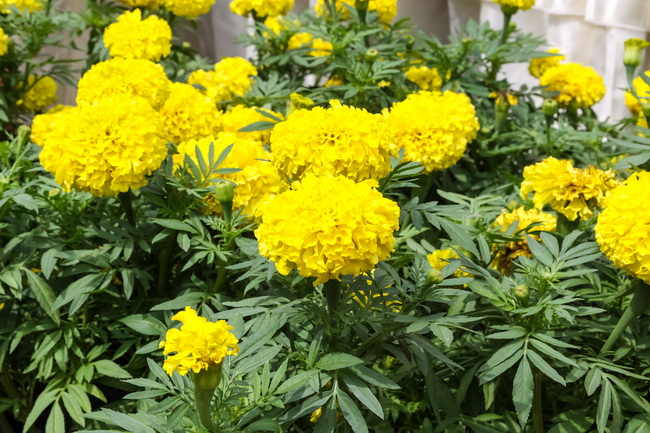
Photo credit: bigstock.com
17. Hyssop
One of the oldest known medicinal herbs around. Closely related to oregano, hyssop (hyssopus officinsalis) is a powerful anti-microbial herb that is great at removing harmful bacteria from the body which causes respiratory and skin infections. Hyssop can also help fight fungal infections, influenza virus, and even strep throat. Hyssop is easy to grow and has absolutely gorgeous purple flowers.
18. Marigold
Marigold is an extremely popular fall flowering plant but is rarely thought of for its medicinal compounds. Marigold (calendula officinalis) is one of the best herbs for fighting inflammatory skin problems such as rashes, acne, and eczema. It naturally lowers fevers and can reduce the swelling of joints. This beautiful plant can fight headaches, and even block the histamines which cause allergy symptoms. Many people use hair rinses that contain marigold to nourish the scalp and to help naturally cover greying hair.
19. Winter Savory
Even the name sounds tasty, doesn’t it? Winter savory (satureja montana) is edible and is very effective for reducing the pain and irritation from bee stings and insect bites. This herb has natural antiseptic compounds and will also help stop infections from bug bites and other wounds. Tea made from winter savory will help to soothe a sore throat and eases indigestion.
20. Lady Ferns
These are long, very light green colored plants that are native to the northern hemisphere and are one of the oldest plants alive. Sometimes called fiddlehead ferns, these plants help stop fevers and coughs, and help fight respiratory problems such as asthma, bronchitis, and pneumonia. Lady ferns also prevent worm or parasite infestation and are great for healing cuts and sunburns.
If you are taking prescription medication or if you are under a doctor’s care, always consult with your physician before consuming any herbs to ensure that you do not experience an adverse reaction or that there are no drug interactions with the herbs you would like to consume.
References:
































